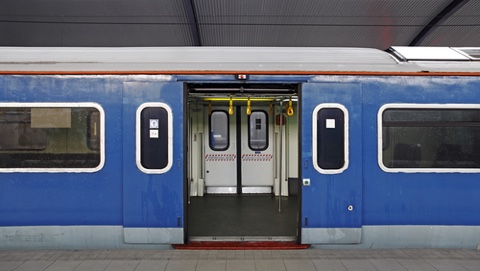
By Richard Erb, Executive Director of City Programs and Events
Transportation and the movement of people has always fascinated me. Perhaps it is my background in robotics and autonomous solutions or my upbringing in metro-Boston near “America’s Technology Highway”, the infamous Route 128 (now I-95) that caught my attention as a young boy.
It seemed every other year the highway was being expanded from 2 lanes to 3 to 4 to 5 (including the brake-down lane) but the traffic problems were not remedied. Today, just like 30 years ago, traffic sits at a stand-still both morning and afternoon each weekday.
When it comes to the evolution of Smart Cities, I am a firm believer that urban mobility solutions are the most personal, transparent and impactful services a city can provide their citizens. Such solutions include not only the roadways, bridges, tunnels, rails and airports, but a growing list of mobile solutions such as connected and autonomous vehicles, alternative fuel vehicles for public transit, car sharing and smart parking applications, location services and intelligent traffic management technologies.
But, before we jump into the future, let’s revisit where we are today. Most of our major metropolitan cities are riddled with traffic and congestion issues, costing consumers valuable time, money and physical stress. Consider the following, urban commuters collectively lost 6.9 billion hours, and 3.1 billion gallons of fuel to traffic delays last year. Excess fuel and lost productivity cost American commuters $160 billion in 2014, up from $114 billion in 2000, and $42 billion in 1982.
Compounding the challenges for drivers is the nations aging transportation infrastructure that has not kept pace with the demands of urban populations. Many of our roads, bridges, rails and airports are in poor condition (I am being kind) and will require replacement over the coming decade putting both fiscal pressure on cities and adding further congestion and delays for citizens.
According to a recently published report by Grand View Research, the global smart cities market will hit $1.4 trillion in 2020, nearly triple the global market size of $568 billion back in 2013. But the largest single segment was smart transportation, covering 16.1% of the market in 2013. Increasing interest in transportation solutions including managing tickets, guidance systems, parking management, and managing traffic is expected to amplify the smart city market demand. Smart transportation is expected to grow at a projected growth of 15.2% annually over the next few years.
When it comes to making cities smarter, there is no better investment than improving urban mobility options for citizens. I have had the privilege of organizing the smart transportation tracks of the Smart Cities Innovation Summits in Austin (June 2016) and most recently at the Smart Cities Innovation Summit Asia, hosted in Korea (September 2016).
I am excited and bullish about the rapid rate of change and innovative solutions coming to the urban mobility market. The global demand and interest in these solutions are real. The benefits from these solutions will be multi faceted. Special thanks to innovators from BYD Motors, Connexion, Get My Parking, Electric Cab of Austin, Polaris, 5D Robotics, NXP, ChargePoint and Moovel for showing us the future of transportation.
Richard Erb is a contributing editor for Smart Cities Connect and the Executive Director of the Smart Cities Connect conference and exposition. For more information about getting involved with the Smart Cities Connect conference and exposition, please visit: www.smartcitiesinnovation.com.


